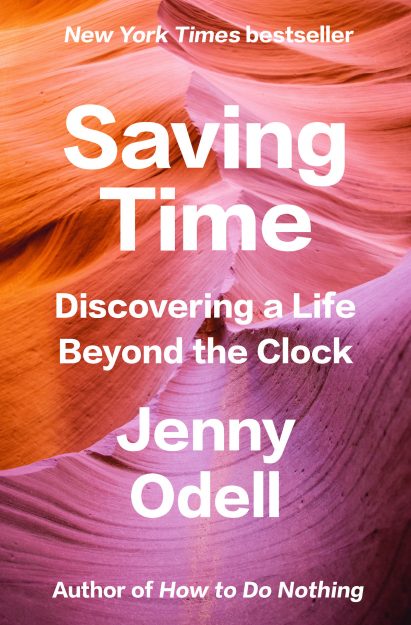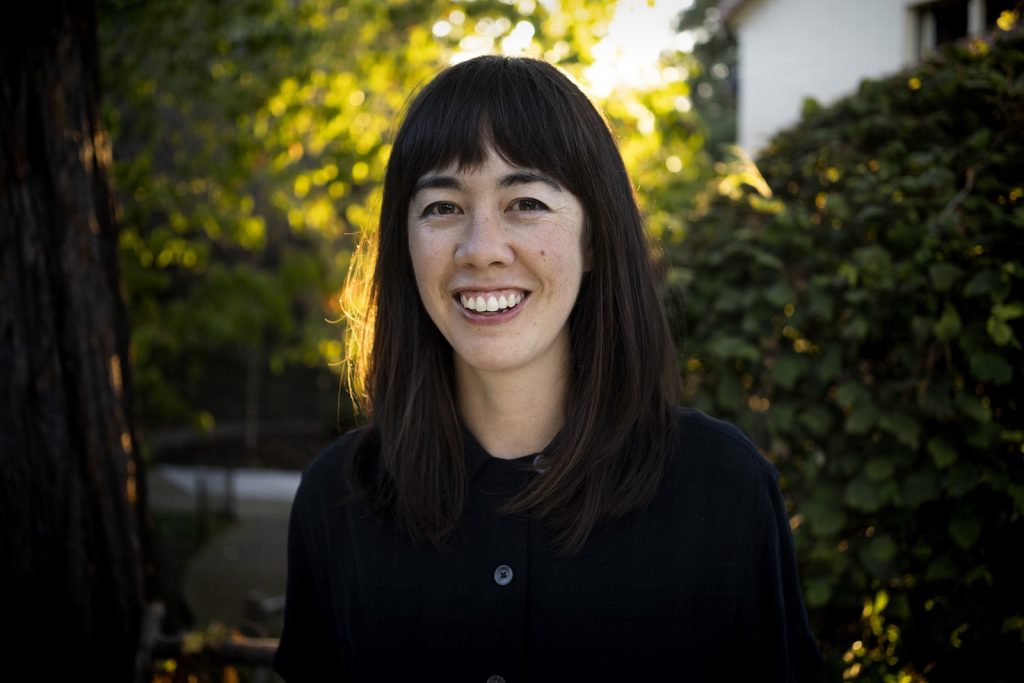In her first book, How to Do Nothing, artist Jenny Odell examined the power of quiet contemplation in a world where our attention is bought and sold. Now, she takes up the question of how to find space for silence when we feel like we don’t have enough time to spend.
In her new book, Saving Time: Discovering a Life Beyond the Clock, Odell traces the history behind our relationship to time, from the day-to-day pressures of productivity to the deeper existential dread underlying the climate crisis. In the process, she explores alternative ways of experiencing time that can help us get past the illusion of the separate self and instead open us to wonder and freedom.
In a recent episode of Life As It Is, Tricycle’s editor-in-chief, James Shaheen, and meditation teacher Sharon Salzberg sat down with Odell to discuss the social dimensions of time, how paying attention can unsettle the boundaries between us, why she views burnout as a spiritual issue, and how love can bring us out of linear time. Read an excerpt from their conversation, and then listen to the full episode.
James Shaheen (JS): These days, it can be so easy to fall into apocalyptic thinking and what you call declinism, which you describe as the belief that a once stable society is headed for inevitable and irreversible doom. Can you walk us through some of the dangers of this view?
Jenny Odell (JO): I think declinism can foreclose a really crucial space of questioning or imagination that would allow you to imagine other pathways forward. It may be the case that that space is vanishingly small, but it doesn’t matter. It’s still very important. Rebecca Solnit has written really beautifully about this: what you believe very literally affects what it is possible for you to do. You see this individually in people where what they think they’re capable of doing affects what they’re able to do, but I think it’s also true collectively. So I worry a lot about not only giving up before it’s over but also how the world looks to someone who’s given up.
Declinism goes hand in hand with the idea that things used to be better—and a lot of things did used to be better. But a blanket notion that things were stable for a long time and now we’re going over the edge is a myopic view in both directions. I’m much more interested in a notion of history where every moment is actually contingent and at every moment things could have gone different ways. If you look at history that way, the present moment appears very different—it looks like it could also go a lot of different ways.
Sharon Salzberg (SS): You also discuss the phenomenon of climate grief, and you suggest that grief can be incredibly useful as it can teach us new forms of subjecthood. Can you say more about the types of subjecthood that grief makes possible?
JO: Climate grief is so much grief for something—or for someone or someones. I think in that acknowledgment is this recognition that you don’t really belong to yourself. In How to Do Nothing, I describe going to Elkhorn Slough and seeing all of these birds. At that moment, there was such a profusion of them and they were so beautiful, but I also couldn’t see them not against the backdrop of loss.
In that moment, I realized that it doesn’t really logically make sense to love anything. From the point of total utilitarian logic, why would you tie your fate to something that is endangered? And yet that is the moment when you experience your deepest sense of humanity. The experience of grief itself is that I care about something so much that it’s disassembling my ego. It’s almost like the center of gravity is between you and the being that you’re grieving for.
JS: Moments like the one you just described seem to unsettle the boundaries between us. So what have these experiences taught you about what you call the illusion of the bounded self?
JO: What the self is is still a very active question for me, and it’s only become more fascinatingly complicated for me through experiences like that. I am someone who has thought a lot about context for a long time. A lot of my art asked the question about how you can separate an individual thing from its context. I was an artist in residence at a dump, and I researched 200 objects, everything I could find about them, and the conclusion that I came to was that this object you’re holding in your hand is the crystallization of economic patterns: people thought they wanted this, or people thought they could get people to want this, or these materials were available and cheap at this time. You have this thing that seems like it’s just given, but actually all of these factors fed into it. So I’ve always been interested in that in all domains.
The same is true for the self. I do feel like I have some sort of core vaguely, but I do also feel like there’s Mountain Jenny, and then there’s Oakland Jenny, and there’s Paralyzed by a Butterfly Jenny, and I’m very different around different people. I think someone could come to the conclusion that there just is no self and it’s all totally meaningless, but I don’t really think that. Instead, I have a very ecological view of the self, like it’s something that’s alive. It’s entirely made out of relationships.
SS: Along those lines, in contrast to the notion of an isolated individual, you write that you’ve come to define being alive as an embrace. What does it mean that being alive is like an embrace?
JO: I think of it as a mix of sensitivity and love. I feel alive to the extent that I can see the birds [around me]—and not just see them but also feel moved by them. I think that is the kind of engine behind wanting to see what the next day brings and also wanting to see how I change in response to those things. My nightmare is feeling like I’m just an isolated unit that’s just incidentally here on earth without having any relationship to anything.
I’m very fortunate to have been able to mostly live in the same place my whole life, and the relationship that I have to this place is so, so meaningful. It’s so much a part of who I am. Someone recently said to me, “I don’t just think that we see places. I think that places see us.” That’s what I mean by the embrace: I want to feel like I’m sensitive to things that are happening around me, but I also want to feel seen—there’s a reciprocal relationship where I’m looking at a world that’s also alive.
SS: You quote the philosopher Jiddu Krishnamurti, who writes that when we are actually seeing, we’re in a state of love and there’s no yesterday and no tomorrow. Can you say more about this state of love?
JO: One of the reasons love feels related to time for me is that there’s nothing instrumental about love, and there’s so much right now that feels instrumental. In How to Do Nothing, I talked about Martin Buber’s idea of I-Thou versus I-It relationships. Having an I-Thou relationship to something is much closer to what I was saying earlier about the center of gravity, and I-It is more like things exist in the world for me to either use them or discard them.
Anyone who’s experienced even one second of love toward anything or anyone knows that the notion of gain or strategy just doesn’t make any sense. It is the ultimate end in and of itself. If you’re there, you just want to be there. I have the linear timeline of my life, but I also know that in these moments that I’ve had where I felt a feeling of love, it felt like time stopped. I don’t really think of myself as having an age in those moments. They’re very strikingly similar, and I suspect they will continue to be similar.
♦

Thank you for subscribing to Tricycle! As a nonprofit, we depend on readers like you to keep Buddhist teachings and practices widely available.
